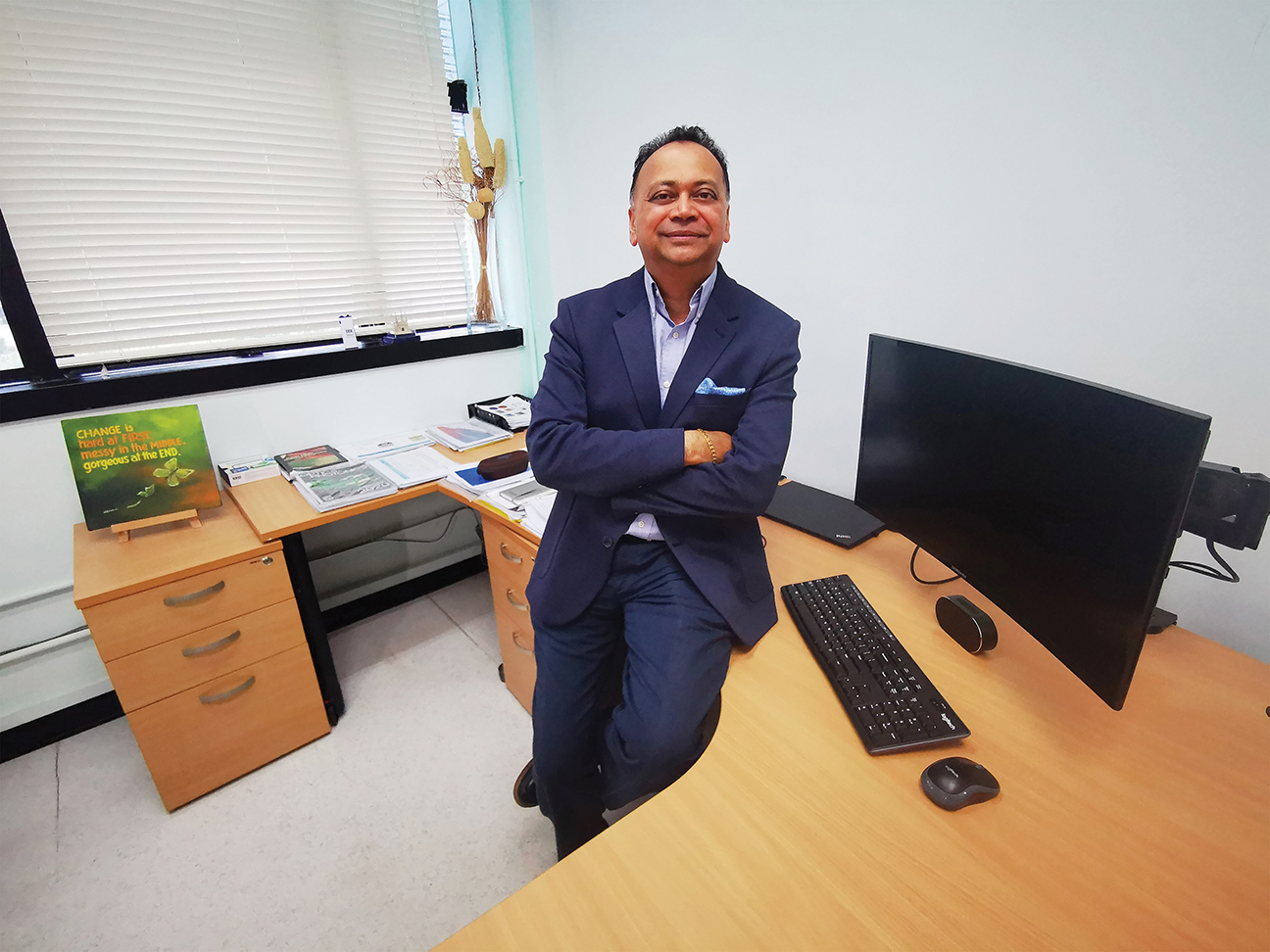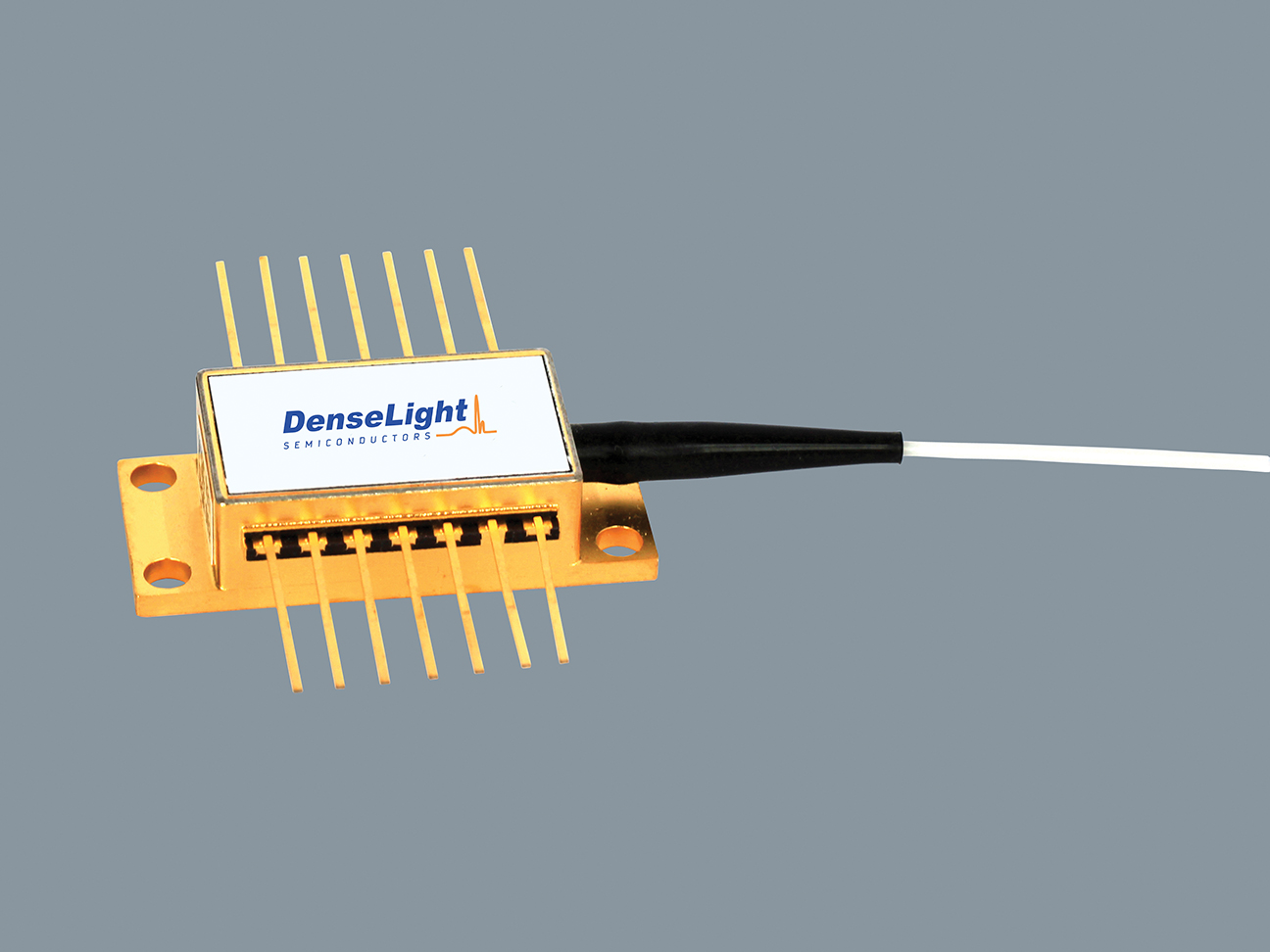From Good to Great: Rajan Rajgopal
Taking the helm at DenseLight Semiconductors and transitioning it to the next level was just the challenge Rajan Rajgopal had been looking for.
Although he had extensive expertise in the field of semiconductors, Rajan Rajgopal had not previously spearheaded a business before he joined DenseLight Semiconductors. But determination and a strong focus on culture has seen him transform what was a small-scale player into a formidable force.

"When I first took over DenseLight, it was a company that had been steeped in the research and development tradition," Rajan, now the company’s President and CEO, tells The CEO Magazine.
"It was a very small company doing work on a project-byproject basis and their product portfolio to the main commercial market wasn’t very big." His major objective was, therefore, to scale the business.
"The first thing I had to do was get the right people – the first step in any company’s turnaround is to get the right people for the right jobs," he recalls, referring to the Jim Collins’ book Good to Great, which stresses the importance of having the right seat on the bus.
"It’s not just important to be on the bus; you’ve got to be in the right seat on the bus. So, similarly, you may have the right people, but if they’re not in the right jobs, then you don’t get the maximum output from them," he explains. Rajan spent his first 18 months at DenseLight getting the right people into the business.
"I was fortunate to be able to get some of my ex-colleagues to join me," he says. "I was able to attract them with our vision to become a world-class laser light solution manufacturer and provider, so we’ve got some pretty good talent for a small company."
The lasers that we make are a fundamental building block of fibre optic communication, be it for data centres or for the 4G and 5G telecom industries.
Once the right people were in place, Rajan turned his attention to establishing a dynamic culture, eliminating the silos that were in place in favour of a more collaborative environment.
This involved establishing some core values and a strategic business process that brought people together in teams. Rajan’s "situational" approach saw him switch between leadership styles in the appropriate circumstances, enabling him to get everyone on the same page. Next on the agenda was expanding its "very narrow" portfolio by developing new products for new markets.
"We were primarily focused on fibre optic sensing, which is an industrial application so the growth rates are very slow, maybe 10–15% a year, which is frankly too low if you really want to scale a company," he explains. "You want to have growth rates of 40–50% at least per year."
The company began developing products for the fibre optic communication market, building lasers that convert electrical signals into a light source or an optical signal, which then carries data at the speed of light.

"The lasers that we make are a fundamental building block of fibre optic communication, be it for data centres or for the 4G and 5G telecom industries," Rajan says. The development process took three years, with the company now in a position where it can go to market, particularly in China, the US and Europe, with a hybrid product portfolio.
"We had some good growth rates in the 40–50% range, but then, of course, COVID-19 slowed us down," Rajan reveals. The impact of the pandemic saw the company finish 2020 with results close to those of 2019.
"We didn’t have the growth in 2020 that we expected before the pandemic, but we didn’t go below what we did in 2019 either. We were kind of flat."
The biggest challenge for DenseLight during the pandemic was getting its new products in front of customers, which it traditionally had done face to face. "You need to know how the customer’s system works and the only way to understand that is to physically sit there with them and test it," Rajan explains.
"If you are a salesperson, it’s important to assess a person’s body language and their intent, which you can’t necessarily do via a video call. You’ve got to have some face-to-face time with people." However, DenseLight was able to dodge the full impact of the virus because it had established a "second source strategy" before the pandemic hit.
"When I came in, I stressed the need to expand our geography a little bit more," Rajan says. The company established new packaging facilities in India and China. "When COVID did hit us and Korea was shut down or China was shut down, I was able to move my product to India, which still hadn’t been shut down," he recalls.
Rajan had also put in place "very good" IT infrastructure, an area in which the company had previously been lacking. As a result, when the pandemic struck, the company was able to switch to remote working without a glitch. As the business was considered an essential service, it was able to keep 50% of its workforce on the factory floor during lockdown.
"We were able to keep our factory running and keep our people employed," Rajan says. In fact, 2020 turned out to be DenseLight’s biggest hiring year, increasing its headcount by nearly 20%. The company had been sold in 2019 and its new investors were "very keen" to drive it forward.
"We spent a lot of money in 2020, so we did our part for the economy," Rajan reflects. While travel restrictions remain problematic from a sales point of view, 2021 is already looking much more positive, he reveals.
"We believe that the second half of 2021 should actually be pretty good for us." Overseeing DenseLight’s transformation from an R&D-focused organisation to a more commercially oriented business has given Rajan an immense amount of satisfaction, and it is a journey that is far from over.
The next 12–18 months will see DenseLight make inroads into China, building a huge new facility from which it will take on the immense market opportunities. So what has Rajan learned about being a CEO over the last four years?
"As a CEO, having the ability to make quick decisions becomes even more important because the time you take to make a decision impacts almost everybody in the organisation," he says. "I think that is very important."
Proudly supported by: